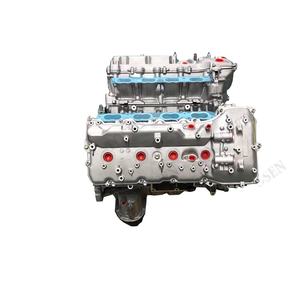Affordable Opel Corsa Engine Options for Your Budget
Affordable Opel Corsa Engine Options for Your Budget
Blog Article
Checking Out the Inner Functions of a Compact Automobile's Engine System
As vehicle drivers, we often take for granted the intricate procedures that happen within the boundaries of our lorry's engine system. In this exploration of a small automobile's engine system, we will certainly unwind the internal operations of this mechanical symphony, dropping light on the enigmas that drive us ahead on our everyday trips.
Burning Process Introduction
The burning process in a portable automobile's engine system is a critical system that successfully converts gas into power to power the car. This process happens within the burning chamber of the engine, where gas and air mix, ignite, and produce regulated explosions. The burning procedure includes 4 primary stages: intake, compression, power, and exhaust.
Throughout the consumption phase, the piston relocates downward, attracting in a combination of air and gas right into the burning chamber. This down movement produces the power required to drive the lorry. This cyclic burning procedure is essential to the procedure of a small vehicle's engine system, making certain efficient power conversion for propulsion.
Piston and Cyndrical Tube Interaction

The piston's precise fit within the cyndrical tube is necessary for keeping ideal compression and protecting against energy loss throughout combustion. Tight clearances in between the piston and cyndrical tube wall surfaces make sure effective securing, allowing the piston to relocate smoothly without permitting gases to leakage past. Appropriate lubrication is also important to lower rubbing and wear between these parts, enhancing long life and efficiency.
Moreover, the style and materials made use of in manufacturing the piston and cyndrical tube effect engine efficiency and toughness. Modern engines often utilize light-weight yet sturdy products like light weight aluminum alloys for pistons and cylinder linings to decrease inertia and boost thermal performance. Generally, the unified communication in between the piston and cylinder is essential to the engine's capability and overall efficiency.
Gas Injection System Capability
Gas shot systems in small car engines play an essential role in specifically delivering gas to the combustion chamber for reliable and controlled ignition. The gas injection system functions by infusing gas right into the combustion chamber at the optimal moment during the engine's procedure (opel corsa engine). This precise timing ensures that the gas blends uniformly with the air for appropriate burning, leading to enhanced fuel performance and decreased emissions
There are primarily two kinds of gas shot systems made use of in small vehicle helpful site engines: port gas injection (PFI) and direct gas injection (DFI) PFI systems inject fuel into the consumption port before the intake shutoff, while DFI systems infuse fuel straight right into the combustion chamber. Both systems have their benefits, with DFI supplying far better fuel atomization and PFI offering a more cost-efficient remedy.
Recognizing Engine Cooling Devices
Effective operation of a compact vehicle's engine counts heavily on the effectiveness of its cooling systems. The cooling system in a compact vehicle typically is composed of a number of elements functioning with each other to regulate the engine temperature level. Understanding these engine air conditioning mechanisms is important for maintaining the efficiency and long life of a compact car's engine system.

Exhaust System Elements Explained
The optimal functioning of a small vehicle's engine air conditioning systems depends upon a complementary system referred to as the exhaust system, which consists of different essential parts for making certain reliable discharges and engine performance. The exhaust system consists of components such as the exhaust manifold, catalytic converter, muffler, and tailpipe. The exhaust manifold collects exhaust gases from the engine's cyndrical tubes and courses them to the catalytic converter. The catalytic converter then converts dangerous toxins in the exhaust into much less unsafe emissions prior to launching them with the muffler and tailpipe.
One critical element of the exhaust system is the oxygen sensor, which monitors the oxygen degrees in the exhaust gases to aid manage gas intake and ensure optimal engine performance. opel corsa engine. In addition, the resonator may be existing in some exhaust systems to decrease sound levels. In general, the exhaust system plays an important function in preserving engine effectiveness, decreasing unsafe discharges, and making sure a quieter driving experience for portable car proprietors

Conclusion
In verdict, the compact vehicle's engine system is a complicated combination of elements that function additional info together to help with the burning process, convert fuel into power, and eliminate waste gases. Understanding the internal operations of the engine system, consisting of the piston and cyndrical tube communication, gas shot system, engine air conditioning systems, and exhaust system elements, is critical for preserving optimal performance and effectiveness of the lorry.
The combustion process in a small car's engine system is an important device that efficiently converts fuel right into energy to power the lorry.Fuel injection systems in compact lorry engines play an essential function in specifically supplying fuel to the combustion chamber for effective and regulated ignition.There are mostly two types of fuel injection systems utilized in small vehicle engines: port fuel shot (PFI) and direct fuel shot (DFI) i thought about this Comprehending these engine air conditioning mechanisms is essential for keeping the performance and longevity of a small automobile's engine system.
The optimum performance of a portable lorry's engine air conditioning devices depends on a corresponding system known as the exhaust system, which comprises various essential elements for making certain reliable emissions and engine performance.
Report this page